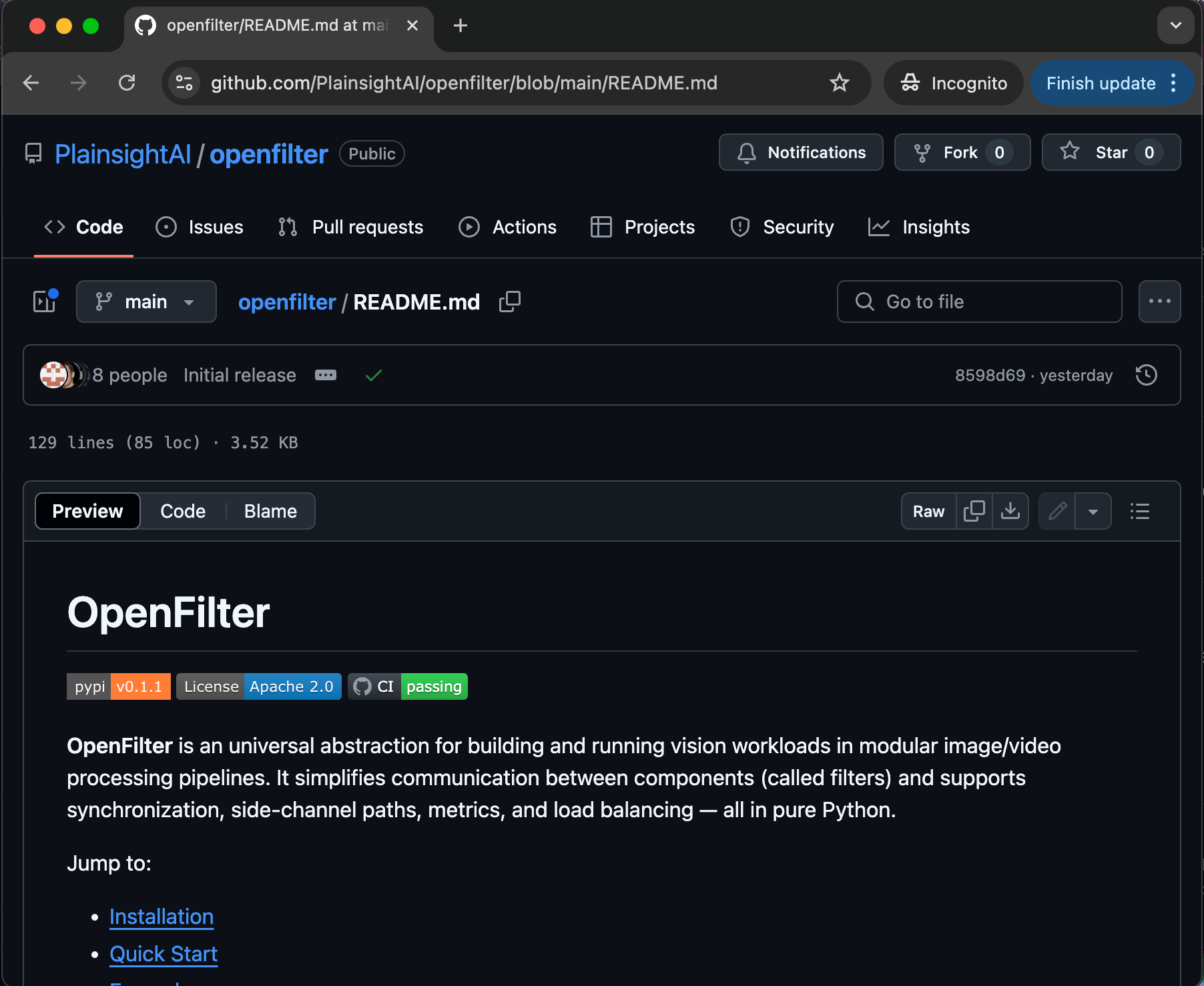
Plainsight is now making available an OpenFilter tool that streamlines the amount of computer vision data that organizations need to collect to train an artificial intelligence (AI) model under an open-source Apache 2.0 license.
OpenFilter provides a framework for building computer vision workflows using modular, composable building blocks, dubbed Filters. Each Filter is an abstraction that represents a unit of vision workload that can encapsulate a machine learning model, computer vision logic, utility functions and testing and evaluation tools. Each Filter is self-contained, with its own lifecycle and dependencies to make it simpler to mix, match, reuse and chain workloads together.
Plainsight CEO Kit Merker said this tool makes it possible for organizations that are deploying computer vision applications to substantially reduce the amount of data they need to collect to train their models using a frame deduplication capability. Instead of having to, for example, store every video, they can now make use of pre-built tracking, cropping and segmentation filters to eliminate files where no meaningful activity has been recorded, he noted.
As a result, data engineers and developers of these applications can now create pipelines to manage video inputs that feed only relevant data to an AI model, database or application programming interface (API). In addition, OpenFilter can also prioritize scheduling to help reduce inference costs.
Longer term, Plainsight plans to extend the reach of OpenFilter to other classes of audio and text data to help organizations collect only the most relevant data needed to train multimodal AI models, he added.
Computer vision applications span everything from security and manufacturing to agriculture and retail. The overall goal is to make it possible to collect any video created using a camera into data that can be more cost-effectively used to train AI models, said Merker.
According to Interact Analysis, the global machine vision market will grow by 1.5% in 2025 and 5.2% in 2026. However, that growth rate is projected to accelerate to 8.3% in 2027, 8.5% in 2028, and 9.8% in 2029. By 2029, the global machine vision market should be worth $7.7 billion, according to the market research firm.
That forecast follows several years of declining revenues. Revenue fell 2.8% from a high of $6 billion in 2022 in the COVID-19 era to $5.8 billion in 2023 and 3.9% from $5.8 billion in 2024 to $5.6 billion in 2024, according to Interact Analysis.
It’s not clear how many AI models are driving computer vision applications, but it’s as it becomes less expensive to collect and filter this data, the number should increase. Video data represents a rich source of data for training AI models that has not been deeply tapped simply because of the cost and data engineering expertise required to manually filter it, noted Merker.
Those same issues, of course, impact other classes of data as well, so, hopefully, as it becomes less costly to filter data, the total cost of building AI applications will decline. In the meantime, the focus on streamlining data engineering workflows is going to be a major focus in the months and years ahead as it becomes more apparent that the building and deploying of AI models is as much a data management challenge as it is a data science issue.


